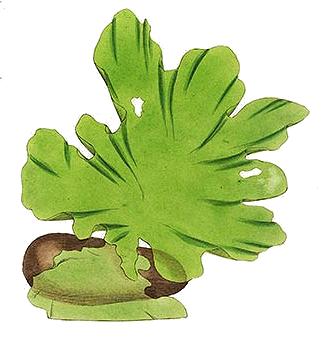Translations:AY Honors/Marine Algae/Answer Key/16/en
15. Be able to identify by generic name at least ten types of marine algae.
The "generic" name in the requirement means that you should learn which genus ten specimens belong to. Don't be scared of the scientific names (Latin names) - they are no more difficult to learn than the common names, especially if you know neither when you start.
We present several species below, but you should not expect that these are the only samples you will find. Get a good field guide and identify the algae you find rather than trying to find the algae you can identify.
Green Algae
Sea Lettuce (Ulva lactuca)
Description: Ulva lactuca is a thin flat green alga growing from a discoid holdfast. The margin is somewhat ruffled and often torn. It may reach 18 cm or more long though generally much less and up to 30 cm across. The membrane is two cells thick, soft and translucent and grows attached, without a stipe, to rock via a small disc-shaped holdfast. Green to dark green in color this species in the Chlorophyta is formed of two layers of cells irregularly arranged, as seen in cross section. The chloroplast is cup-shaped with 1 to 3 pyrenoids.

